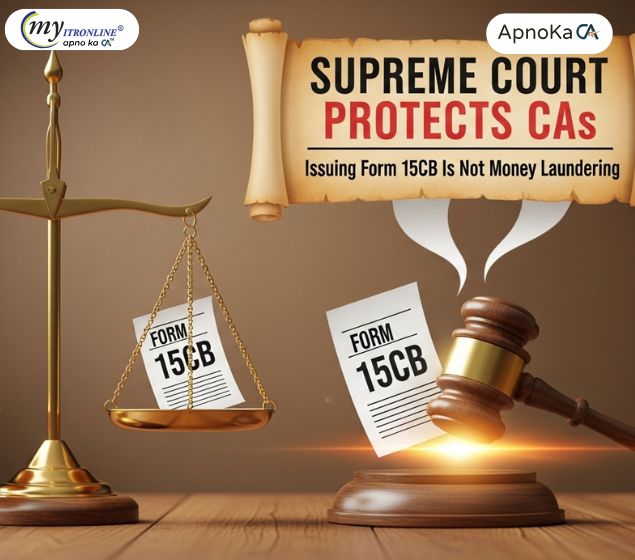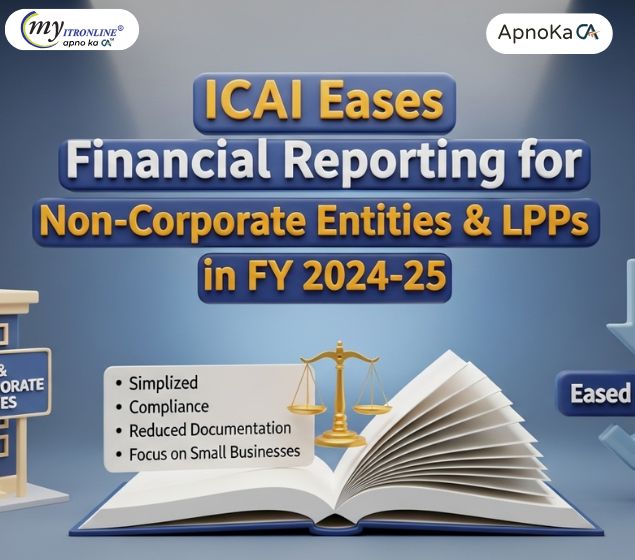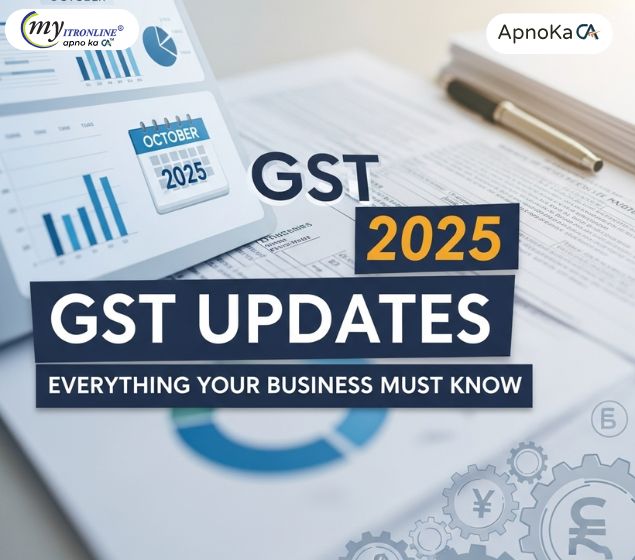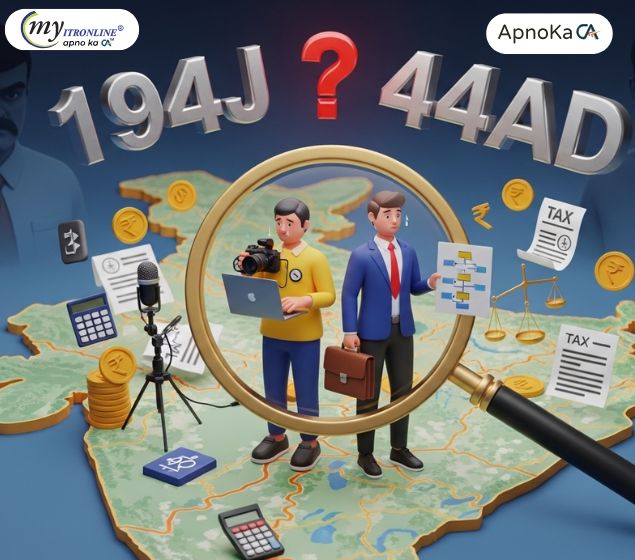# tan
12 posts in `tan` tag

GST Annual Filing: Everything You Need to Know for FY 2024-25
The annual Goods and Services Tax (GST) filing for the 2024-2025 financial year is quickly approaching. This post explains who needs to file the yearly return (GSTR-9) and the reconciliation statement (GSTR-9C), outlines the penalties for delays, and provides an essential checklist to ensure timely compliance.

Supreme Court Protects CAs: Issuing Form 15CB Is Not Money Laundering
The Supreme Court of India has upheld that Chartered Accountants cannot be prosecuted for money laundering simply for issuing Form 15CB, as it is a statutory duty under the Income Tax Act. This ruling protects professionals from being unfairly targeted and clarifies the limited role of CAs in compliance matters.

Refund Adjusted Against Outstanding Demand: What You Need to Know
If your income tax refund is adjusted against an old tax demand, it’s likely due to Section 245 of the Income Tax Act. This blog explains what the notice means, how to respond within 30 days, and what options you have. Learn how to protect your refund and keep your tax records clean.

ICAI Membership Fee Alert: 1.20 Lakh CAs Risk Cancellation Pay Before September 30, 2025
Nearly 1.20 lakh out of 5 lakh ICAI members are at risk of losing their Membership and Certificate of Practice (COP) due to non-payment of annual fees for 2025-26. The Institute has set a firm deadline of September 30, 2025, after which memberships will be automatically cancelled. This will result in immediate loss of practice rights, audit signing authority, and professional standing. Members can pay securely through the ICAI eServices portal using multiple payment options including UPI, net banking, and cards. With just days remaining, immediate action is essential to avoid cancellation and the hassle of reactivation procedures.

ICAI Eases Financial Reporting for Non-Corporate Entities & LLPs in FY 2024-25
The Institute of Chartered Accountants of India (ICAI) has announced a significant, temporary compliance relaxation for non-corporate entities and Limited Liability Partnerships (LLPs) for the Financial Year 2024-25. This allows these entities to optionally adopt updated guidance notes on financial statements, aiming to reduce administrative burden while maintaining transparency and accuracy. This flexibility ensures that core accounting standards remain paramount, offering businesses a choice in their reporting approach for the upcoming fiscal year.

Big Changes Coming to GST on October 1, 2025: What Your Business Needs to Know
The Indian government has announced significant GST updates, effective October 1, 2025, stemming from the Finance Act, 2025. These amendments will impact definitions, voucher taxation, Input Tax Credit (ITC) on plant & machinery (retrospectively from 2017), return filing procedures, appeal processes, and introduce a new 'track & trace' system with associated penalties. Businesses must prepare for these changes by reviewing operations, updating systems, and training staff to ensure compliance and manage potential cash flow implications.

194J vs. 44AD: Tax Scrutiny on India's Content Creators & Consultants
This blog post addresses the increasing tax notices faced by Indian content creators, influencers, and consultants due to a common mismatch: clients deducting TDS under Section 194J while they file income tax returns under Section 44AD. It breaks down the key tax provisions (194J, 44AD, 44ADA), explaining what each means for freelancers and businesses. The article clarifies that a 194J deduction doesn't automatically mandate filing under 44ADA; the crucial factor is whether the profession is listed under Section 44AA. It details potential impacts on tax burden, cash flow, and the need for increased documentation, while also offering actionable steps for creators and consultants to ensure compliance, including clarifying work nature, maintaining records, client communication, cash flow monitoring, and seeking professional tax advice.
.jpg)
The 1,50,000 Mistake: Why Filing Under 44AD Instead of 44ADA Could Wreck Your Finances
This blog post addresses a common but serious error made by professionals and freelancers who incorrectly file their income tax returns under Section 44AD (for businesses) instead of the appropriate Section 44ADA (for professionals). It explains the fundamental differences between the two sections, how the Income Tax Department's AI systems detect this discrepancy through TDS mismatches and unusually low-profit declarations, and the severe consequences that follow, including mandatory audits and multiple financial penalties. The article concludes by offering a clear, step-by-step guide on what to do if you receive a notice for this mistake, emphasizing the importance of consulting a professional and taking prompt corrective action.
.jpg)
Don't Miss These! India's Statutory Compliance Calendar for August 2025
This blog provides a comprehensive guide to the statutory compliance deadlines for August 2025 in India. It covers key due dates for Goods and Services Tax (GST) returns like GSTR-1 and GSTR-3B, Income Tax requirements including TDS/TCS deposits and return filings, and other important statutory payments like PF & ESI. The post is designed to help businesses and individuals track their obligations, avoid penalties, and maintain financial discipline by presenting all critical dates in a clear, easy-to-understand format.
.jpg)
Easy Guide: Which ITR Form (3 or 4) is Right for You, Freelancer?
This blog explains the key differences between ITR-3 and ITR-4, specifically for freelancers and consultants, outlining eligibility criteria and scenarios to help them choose the correct income tax return form.
.jpg)
Important Update: Tax Audit Forms 3CA-3CD & 3CB-3CD Now Live with Latest Changes
This blog post announces the release of updated Tax Audit Forms 3CA-3CD and 3CB-3CD on the e-Filing portal. These updates are based on Notification No. 23/2025. It explains the purpose of these forms, identifies who must file them, and highlights the importance of knowing the new changes and meeting deadlines. The post stresses the need for proactive compliance to avoid penalties and positions myITROnline as a helpful partner for smooth tax audit and ITR filing.
.jpg)
India's New Income Tax Regime (Section 115BAC): Your Comprehensive Guide for FY 2024-25 & 2025-26
This comprehensive guide breaks down India's New Income Tax Regime under Section 115BAC, now the default for individuals and HUFs. It details the revised income tax slab rates for Financial Years 2024-25 and 2025-26, highlighting the increased basic exemption limits and the enhanced rebate under Section 87A. The article clearly outlines the limited deductions and exemptions still allowed (e.g., standard deduction, employer's NPS contribution) versus the numerous ones no longer applicable. It concludes by helping taxpayers determine whether the new regime or the old regime is more beneficial for their specific financial situation and explains the process for switching between the two.
